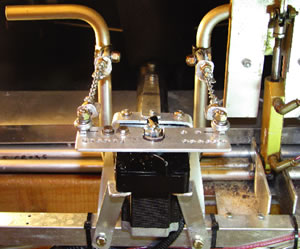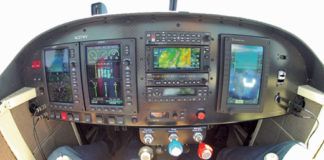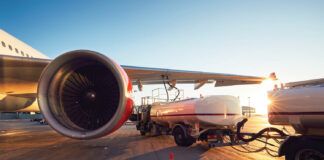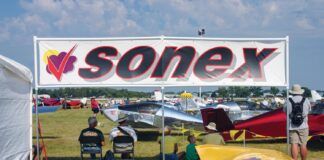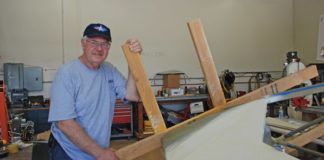Something most of us used to say (and some still do) is that we really don’t need an autopilot in a homebuilt aircraft. I understand the sentiment. Light makes right. Simpler is better. Spend less, not more. Enjoy your airplane and its high-tech equipment, but look outside once in awhile, huh?

TruTraks Sorcerer.
You’re welcome to that perspective, of course, but a large part of the market has spoken in favor of autopilots, and the benefits are compelling. When autopilots are used properly, you gain situational awareness and reduce workload. For certain types of pilots, the result is increased safety. (Just don’t turn your brain totally off.) For every old-timer who claims an autopilot makes you soft, there’s another pilot who will tell you that being fresh at the end of a trip, for that night landing in instrument conditions, is well worth the investment. A modern autopilot is better than a human copilot: It never gets tired, never needs to be fed (or emptied) and, at least for the good ones, never does anything you don’t expect.
Experimental Ottos
Development of Experimental-only autopilots has fueled the market and created great demand through the simple concept of value. Until the last decade, autopilots for homebuilts were mostly certified boxes tweaked to fit your aircraft. As a result, they were heavy, fairly expensive and only modestly capable. Moreover, they were largely analog devices that needed to be designed and carefully tuned for every airframe. Builders retrofitting autopilots that were meant for other ships often found sloppy handling, poor tracking and difficulty getting the things to work.
Most modern light-aircraft autopilots can trace their roots to Jim Younkin, who probably holds more patents for aviation autopilots than any other individual; his experience in the field is unparalleled. It is significant to remember that much of what we have available today, even certified equipment, was and is directly attributable to him. As Younkin celebrates his 80th birthday this year, its important to remind people about the roots of these devices.
Today, we have several manufacturers delivering products just for Experimentals. Because there is no certification requirement, these units are, as a rule, much less expensive, more capable and-this is good if you know what you’re doing-far more user-serviceable. (Im getting ahead of myself here, but don’t dismiss the requirement of autopilot setup in your Phase I testing. Few autopilots work perfectly on their default settings, and to make them usable across a wide range of types requires fairly authoritative adjustments.)
Since we last covered this topic in depth in the July 2007 issue, changes to the landscape have been significant. For example, while the basic TruTrak lineup has outwardly changed little (perhaps proving it was ahead of its time), we have, offsetting the closure of Navaid Devices last year, some new players. They are Advanced Flight Systems and Dynon, and their products indicate a shift in philosophy from standalone devices to integrated solutions. At the same time, TruTrak has created a new EFIS with internal autopilot guts to drive the company’s existing servos, as has MGL Avionics.
This idea of integration isn’t new. Greg Richter of Blue Mountain Avionics was the first to marry an autopilot and an EFIS. It makes sense. The EFIS has all the important flight information already, so it might as well be used to control servos. The upside is handy integration-move the heading bug on the EFIS, and the autopilot follows, for example-but the downside is a loss of redundancy. If you lose the EFIS, you’ve lost the autopilot as well. Standalone devices offer some measure of backup.
Even with all the jostling and shifting in the market, its not hard to get your bearings. Lets have a look at each of the manufacturers products, and understand that specs, features and pricing are valid as of early March. At the rate that this part of the avionics industry moves, anything can happen, and probably will.
Advanced Flight Systems
Rob Hickmans company has established itself as a strong player in the EFIS and engine-monitor divisions, and now moves into flight control. His approach would seem to be a smart one: Join with TruTrak Flight Systems and benefit from that company’s expertise in servo design and development. Why reinvent the wheel when its been nearly perfected by someone else?
Advanced Flights autopilot would appear to be your garden-variety TruTrak DigiFlight II VSGV with the AFS logo on the front. You could make that assumption, and you would be wrong. Inside the familiar autopilot is new programming, and on the back is another serial port, in addition to the normal RS-232 and ARINC 429 ports. In general terms, this is a DigiFlight autopilot, and it controls the servos directly.
But heres the cool part. This special TruTrak head unit can receive a serial stream from the Advanced Flight EFIS to control modes. No need to reach for the control head to turn on or change operating modes; its all done from the EFIS menu system. In terms of commanding the autopilot head, the Advanced/TruTrak system works like several others by synthesizing a GPSS and GPSV signal that the autopilot head interprets as coming from a WAAS-enabled GPS such as the Garmin 430W.
So why would you want this setup over an integrated autopilot? One word: redundancy. The guts of the TruTrak head are intact, and it can work totally without the EFISs assistance. Whats more, Advanced Flight recommends an input switch in the installation that would allow your GPS to talk directly with the autopilot controller. If you had a Garmin GPS 430W, for example, it would be possible to set up and shoot a fully coupled approach without the EFIS so much as switched on-not that youd do that intentionally, of course. When you have a Garmin SL30 in the airplane, you also get VOR/LOC/ILS through the serial stream, which is displayed on the Advanced Flight EFIS, and then translated to an ARINC output and fed to the TruTrak head as GPSS and GPSV signals; the autopilot follows that nav data right down the pipe.
This autopilot integration is still in the early stages, but Hickman and company have a big head start by using the TruTrak head and servos, which are themselves served by a broad range of installation kits.
Blue Mountain Avionics
While Greg Richter may not have invented the autopilot, he is credited with the first affordable EFIS for Experimental aircraft. Using proprietary hardware and software, the BMA autopilot can be used only with a BMA EFIS. The upside to this is you don’t need to purchase a standalone autopilot to install, but this also means that if your EFIS does not function properly or fails, you will also lose your autopilot. The BMA autopilot is available in a single configuration of a two-axis autopilot (controlling pitch and roll).
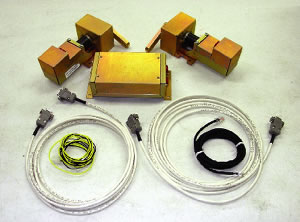
Blue Mountain autopilot.
With an EFIS and appropriate avionics interfaced to the EFIS, the BMA autopilot will track course or heading (via bugs on the indicator), fly a GPS flight plan, follow external VOR/LOC/GS signals, and includes altitude, vertical speed and airspeed hold as well as selected altitude capture-these are sophisticated functions that rival what youd find in a Boeings flight-management system. The BMA servos have always used an internal clutch that will physically disconnect the servo from the flight control when not engaged. They are available as lever (or arm) style, and if your airplane has a mainly cable system, you’ll need to fabricate your own mounting scheme. In addition, the BMA autopilot requires mounting of an external autopilot control box. While early generations of BMA servos were somewhat hefty, the current generation servos are on par with the competition.
Dynon Avionics
In late 2008, Dynon Avionics began shipping its highly anticipated autopilot. Expanding on well-known principles established by companies such as TruTrak and Blue Mountain, Dynon offers builders the option of adding basic to midrange autopilot functionality to the company’s existing EFIS models, the EFIS-D100, EFIS-D10A and the FlightDEK-D180. (The autopilot will not work without one of these EFIS boxes in the airplane.)
Dynon has again played the value card. The servos can be purchased for $750 each, and you don’t need to buy both at the same time. You can install roll control now and add pitch later if you want. The system is fully functional with no external boxes, but the outboard AP74 module ($450) provides dedicated mode buttons and a value knob that is used for controlling the autopilot and setting other EFIS functions such as adjusting the altimeter. In February, Dynon announced that it was suspending development of the AP76 module, which would provide increased functions-including full approach coupling.
The basic two-axis Dynon autopilot will follow a selected heading on the EFIS, or it will follow a selected ground track provided by an external GPS. It can also follow an RS-232-provided GPS nav source natively or follow an ARINC 429 signal if you also have the HS34 module. In the current form, the autopilot has altitude preselect; bug the desired altitude, and the autopilot will fly toward it and level off once it gets there. In the initial version, the vertical speed is set in a well-buried menu item; the adjustable vertical speed (vertical speed hold, in other words) was supposed to arrive in the AP76. Word from Dynon is that this feature might still make it into the basic autopilot. Also currently in testing is VOR/LOC navigation using the SL30 nav/com.
The Dynon servos are based on technically proven stepper motors that are digitally controlled-they are loaded onto the Dynon Smart Avionics Bus (DSAB). While you cant feed other companies servos from the Dynon setup, the new servos duplicate the footprint of the popular TruTrak servos. In this way, the Dynon models will fit existing installations. Available in multiple torque ratings, the Dynon servos are now shipping as lever-arm style, but the capstan version is expected any day now. (Indeed, itll almost surely be ready by the time you read this.)
Like most companies new to autopilot development, Dynon has experienced some early glitches, but the company has shown the desire to get on top of the problems quickly. It has a large base of beta testers as well.
If you already have a Dynon EFIS, adding an autopilot can be as affordable as $1500 for two axes. Pilots who have time with the system strongly recommend the AP74 external box, because controlling the autopilot modes through the EFIS pushbuttons isn’t ideal.
MGL Avionics
In the last year, MGL Avionics has started shipment of its larger screen EFISes, which are directed at the higher-end sport aircraft market. One thing many of its customers requested was a low-cost autopilot. The company listened and is now offering customers the ability to add servos to its EFIS. Following the lead of Blue Mountain and Dynon, the MGL installation is similar in that it uses the EFIS as the controller for the autopilot.
Unlike Dynon, MGL is not manufacturing its own servos, but instead decided to partner with Trio Avionics to provide servos. The Trio Gold Standard servos are well proven, technically sound, light and seem to be extremely reliable. Trio has been in business many years and makes excellent products, so we know that part of the system will be bulletproof. MGL claims to support up to five servos, though we have no clue why you would need five other than it sounds good! At press time, we had no direct experience with this product, nor do we know of any users flying behind it, so we are unable to provide a concise report on its capability, functionality or reliability. We have no doubt that MGL will provide an excellent product, but I would caution people not to jump on the bandwagon until plenty of proven and documented flight-testing has been completed in your type of aircraft.
Trio Avionics
Trio Avionics is the only other manufacturer besides TruTrak providing standalone autopilots that will perform on their own as well as interface to most popular EFISes. The Trio Gold Standard servo has also proven to be reliable (and as noted, even used by other manufacturers). It is unique in that it is extremely lightweight and has a clutch that completely disconnects the servo from the flight controls when not engaged.

Trios EZ-1.
Trio offers individual single-axis wing levelers that interface to many EFISes and GPSes as well as pitch-axis autopilots that range from simple altitude-hold functions to advanced vertical speed and altitude pre-select capability.
In 2008, Trio Avionics began shipping its advanced ProPilot autopilot, which offers expanded two-axis functionality as well as the ability to interface nicely with many EFISes and even some radios such as the GNS 430W to fly coupled approaches. The ProPilot adds ARINC interface capability that its other systems did not have. This means the autopilot now has the capability to provide both lateral and vertical steering guidance. The new autopilot fits nicely in a standard 3.125-inch instrument hole, and the attractive new interface makes operation extremely easy and intuitive.
Our experience has been that all of the Trio products are reliable, affordable and easy to install. Trio is also the only other company besides TruTrak to offer an optional automatic pitch-trim module. This module will sense the trim of the aircraft and automatically adjust trim for you (assuming you have electric pitch trim). One last thing to mention is that Trio Avionics is one of those companies that tests its products by flying behind them in its own airplanes. While it does have customers who are experienced beta testers, Trio does not rely on customers to do 100% of its testing.
TruTrak Flight Systems
Arguably, TruTrak is the undisputed leader when it comes to Experimental-category autopilots. With nearly 12,000 autopilot servos delivered/installed, its hard to deny the company’s success. If you could print money on a reputation, company founder Jim Younkin and his crew could use Franklins for napkins.
Some of that success is undoubtedly due to the company’s diverse product line. It ranges from simple, single-axis standalone autopilots to feature-rich, do-it-all boxes that stop just short of serving lunch. They are designed in a building-block style, with the more advanced models adding features and capabilities to the lower end.
The basic standalone autopilot starts with the DigiTrack, a single-axis system that will follow a specified heading (ground track or on its internal magnetometer as a backup) or a simple GPS nav course. Next up are the Pictorial Pilot and ADI Pilot I. Both of these are combined with a flight instrument, an electronic turn coordinator and TruTraks innovative attitude direction indicator, respectively. These single-axis autopilots will follow a selected heading or a GPS-derived nav signal. A two-axis version of the ADI Pilot is called the II, and adds a pitch servo and altitude hold. The Digitrak and Pictorial Pilot head units are available as 2.25-inch or 3.125-inch instruments; the ADI version is 3.125-inch only.
When you get to dual-axis standalone autopilots, you start with the DigiFlight II series. Where the single-axis model has just an RS-232 serial input, the DigiFlights have that and an ARINC 429 interface. The base model has GPS nav modes, heading- and track-hold modes. (The normal is track-hold when a GPS signal is received, else it reverts to a magnetic heading.) It will hold altitude as well. The II G adds GPS steering. The II VS adds vertical-speed hold. The II VSG combines those two features, and the II VSGV adds GPS Vertical Nav; this is the autopilot to hook to a Garmin GPS 430W for a fully coupled GPS-based approach. All versions of the DigiFlight II can be ordered as 2.25-inch round face instruments or as a flat pack. None of the DigiFlights will communicate with analog or serial traditional nav/coms for VOR/LOC/ILS coupling.
TruTraks top line autopilots are all radio-stack-width flat packs, and feature full nav-radio compatibility, including VOR/LOC/ILS coupling. The AP 100 is the base model; the Sorcerer and RV-10 AP add altitude preselect to the AP 100s already long list of features. Its fair to say this strata of TruTrak autopilots is as capable as anything out there.
All of the TruTrak standalone autopilots have their own internal sensors, but the midrange to higher-end units incorporate more sensors (including pitot/static inputs) to provide a wide margin of safety and reliability even when they’re not connected to an EFIS.
In the past year TruTrak began delivering the EFIS AP, available with a built-in autopilot at varying levels of functionality (depending on price) so builders can choose a unit that fits their budgets. The user interface is incredibly simple and easy to use while providing an excellent primary flight display that interfaces to most popular avionics.
Certified Systems
I wont spend much time reviewing certified systems, because frankly we homebuilders have a better selection of autopilots available to us at more reasonable prices. For now, the Garmin GFC autopilots seem to be among the most respected in certified aircraft, but they are not available to homebuilders. Longtime stalwart S-Tec still produces and sells autopilots and has now merged with Chelton Flight Systems into the Cobham Avionics family. Its systems are well proven, but they’re expensive and lacking in features compared to the Experimental options. The story is much the same for Century Flight Systems, which still produces an excellent product.
A parting shot, if you will. Adding even a single-axis autopilot to your aircraft will make flying your plane safer and more pleasant. You can take a few seconds to look at a chart, have a drink of water, or use it to get out of a cloud that you’ve accidentally flown into. There aren’t many other gadgets you can buy that provide the bang for the buck of an Experimental-class autopilot.

